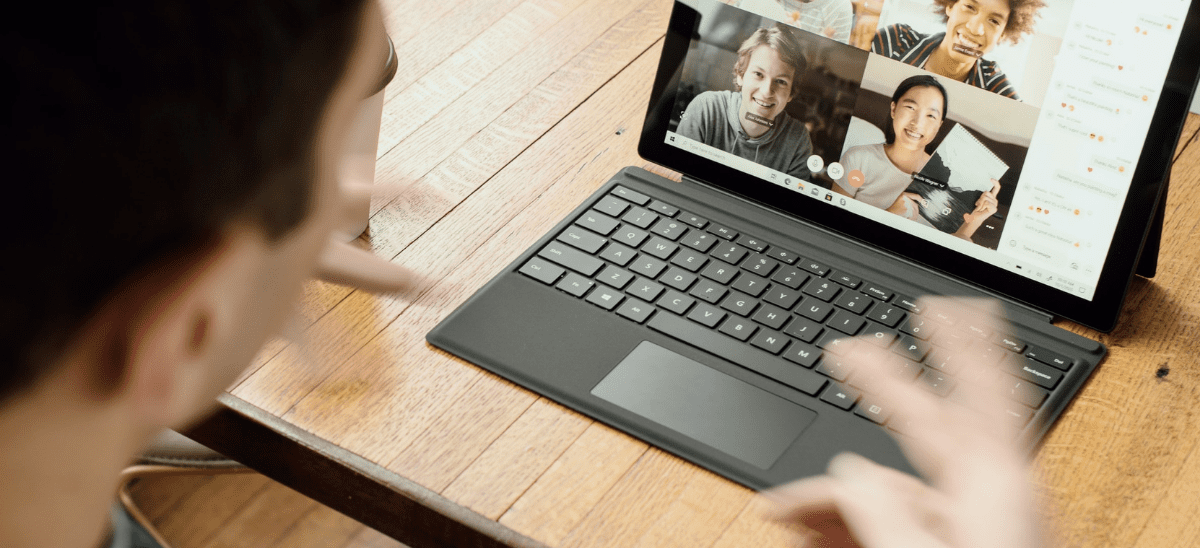Classroom management software supporting teachers through flexibility

Despite educators’ best efforts, the digital transformation from in-person to online and hybrid learning certainly didn’t go off without a hitch. The sudden onset of the coronavirus pandemic forced schools to scramble to change their systems overnight. While many schools rushed to purchase online education technology tools, few had the foresight to invest in reliable classroom management software
After almost three years of switching between in-person and online teaching, hybrid learning is now becoming the new normal. If for some reason students cannot physically attend classes, they will now get to chance to join their classmates via remote connection.
The practical applications of hybrid learning go beyond the pandemic. Students who need to stay home to look after a sick relative can still attend classes. Or, they may be sick enough to travel but can still participate in today’s lessons. Finally, students without access to public transportation or facing non-emergency weather disturbances can still come to class. With a hybrid option always available, students forced to stay away from school grounds can still show up and learn.
How teachers adapted to hybrid teaching
With hybrid learning, the instructor usually moves the teacher’s desk from the classroom to online. This means turning all instructional material, lesson plans, and activities into online versions. Hybrid teaching also meant preparing course material in advance. This includes deciding on how best to deliver the material to generate the most interest from students. During the actual classroom experience, hybrid teaching will require some dexterity from the instructors. At the minimum, it means learning to operate at least three distinctive software programs. These are video conferencing software, learning management systems, and classroom management software.
Video conferencing software and learning management systems
This software is the primary tool needed to establish communication with students. The teacher can connect to individual students via a video link to form a virtual classroom. With video conferencing, teachers can broadcast live lessons to connected students. These live lessons can be fully interactive, or for more one-sided instructional purposes. Learning management systems (LMS) store and manage the data needed by teachers for their everyday lessons. They contain the school’s instructional modules, including the semester’s curriculum and daily lesson plans. The LMS also holds the students’ learning materials such as slides, presentations, activity pages, and quizzes – which the teacher can distribute via file sharing. LMS materials are usually stored in the school district’s servers, as this helps secure the files.
Classroom management software
Classroom management software (CMS) is the third component that holds equal importance as the prior two. This software allows the teacher to get an over-the-shoulder view and control the conduct of learning in the classroom. With CMS, teachers can monitor individual students by checking if their devices are displaying the right content. If they’re not, the teacher can simply lock the device to prevent non-productive apps from running and privately notify the student of this. Meanwhile, teachers can also reach out to struggling students to provide personalized assistance.
Hybrid learning is the future of education
With many areas reporting a drop in COVID-19 cases, districts are now eagerly reopening their school. However, the benefits offered by many of these online learning solutions still exist and enhance the blended learning model. This is why schools that invested in online learning tools are now adopting hybrid learning systems.
While many students are healthy enough to attend classes physically, some students may
not have the same luxury. Any reason could prevent them from traveling. They might be asked to stay home to attend to an ailing family member. Or, they might have immunocompromised bodies that require further safeguarding. In cases like this, hybrid systems help allow indisposed students to join their classmates from home. Hybrid classes can accommodate both in-person students and online learners simultaneously. It also helps if the teachers themselves need to conduct class remotely.
Helping teachers to handle hybrid learning better
Even the most experienced of teachers initially felt overwhelmed with the technological requirements of hybrid learning. However, they have learned to adapt to their new environment by letting the technology work with them instead of adding another layer to their tasks. This is why it’s important to provide instructors with the tools that actually help them manage a hybrid classroom.
Instead of spending so much time making the software work, they should be given the opportunity to focus on instruction. This allows teachers more time to individually coach struggling students, resolve disputes, and highlight accomplishments. Choosing the right software used in hybrid learning systems is important. Teachers will need all of the help they can get to maintain control of the hybrid classroom. Juggling three separate software systems while tending to two distinct audiences can be an overwhelming experience. At the same time, hybrid learning requires teachers to have exceptional handling of the physical and digital classroom simultaneously.
Leveraging all-in-one classroom management software
One great way to help teachers cope with the demands of in- person, online, or hybrid learning is to consider utilizing all-in-one software. It effectively handles all three functions needed for today’s classroom. Instead of switching between three software systems during lessons, classroom management software integrated with video conferencing and learning management features can help reduce the workload. This also reduces the likelihood that one component fails and disrupts the entire session. Lightening the technical demand of virtual learning means teachers will have more time to do what they do best: enlighten young minds. Using integrated software when teaching a class means teachers can give more attention to the students.
In addition, improved classroom management software means teachers maintain better control of the room, even in a hybrid scenario. School districts that are heavily invested in online educational technology should consider the merits of software that works in all learning scenarios: in-person, online, or hybrid. There are plenty of reasons for schools to offer students hybrid learning. Regardless of the reasons for their inability to attend class in person, students will find it reassuring to know they still have alternative options to continue learning.
By: Nadav Avni, Chief Marketing Officer at Radix Technologies
